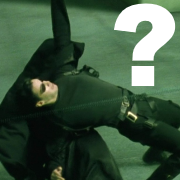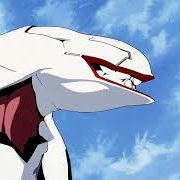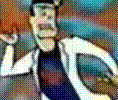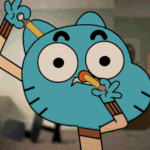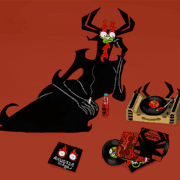|
Jimbo Jaggins posted:theyre cute
|
|
|
|

|
| # ? Apr 24, 2024 22:55 |
|
Pick posted:this is what a baby sand dollar looks like: Asteroids HD looking good
|
|
|
|
Hazo posted:I mean ctenophores are rad but there's still a ton of fun stuff to talk about with stinging jellies true. i have yet to do a "worm phyla" thread though. that's going to be a srs effort post
|
|
|
|
SHISHKABOB posted:yes I understand that. What I want to know (and obviously we lack the answer due to incomplete fossil records since these plants don't fossilize well or at all) is how did it start. I mean I know this is that dumb anti-evolution argument basically of "what are the missing links" but I want to know what they are so I can understand what happened. How did a normal plant turn into a venus flytrap, like what were the steps. Or what was the venus fly trap before it was a venus flytrap. there was a time when there were no plants at all, then there were some plants, and now there are carnivorous plants like the venus fly trap. But what was the evolutionary impetus that caused the plant to adapt in that way. A lot of the "how" for many people is misunderstood because they fixate on the results of evolution too much. The ancestors of a venus flytrap weren't aiming to become a venus flytrap, and some of the steps of their evolutionary path may have had nothing to do with eating bugs. Evolution is blind, and it often works with bits and bobs of whatever's available to do the next thing. A good example of this is the evolution flight. It's very easy to see how a creature goes from glide -> fly, but how do you go from ground -> glide? If you're only 2% better at gliding than your ancestor that can't glide at all, you're still going to fall like a rock! That's where the bits and bobs come in. There's a good possibility that the original insect wings were solar panels. Current insects with wings often use them for thermoregulation, in the sun to absorb heat or turned to the side to cool down. The point where a stubby proto-wing is big enough for the best heat transfer is also the point where they're starting to be effective for flight.
|
|
|
|
Hazo posted:Polyphyletic basically means "critters that look alike but may not actually be related." Sharks and dolphins!!!!!!
|
|
|
|
SHISHKABOB posted:Sharks and dolphins!!!!!! Yeah, if you had described Sharkodolphinae as "dolphins and sharks" based on "big, gray, fast-swimming animals" that would be a polyphyletic group.
|
|
|
|
Pick posted:you can see the barnacle Holy poo poo! They have tentacles in there?!
|
|
|
|
Bored posted:Holy poo poo! They have tentacles in there?! Technically they're cirri. They're strands with fringes used to filter feed.
|
|
|
|
Bored posted:Holy poo poo! They have tentacles in there?! If you look at a barnacle in the water you can see them sort of grabbing at the water and pulling back. It's quite hypnotic.
|
|
|
|
Larval barnacle: 
|
|
|
|
Mmmmm uni.
|
|
|
|
 larval brittle star
|
|
|
|
Thanks for the hott sea urchin pix
|
|
|
|
Pick posted:Technically they're cirri. They're strands with fringes used to filter feed. It's neat to watch them eating
|
|
|
|
I have a couple purple urchins (Pacific NW) in a 120 tide pool tank at home. It's hard to tell from the pictures of other urchins here but they have tentacles all over their bodies that come out of the test/shell. They wave about between and beyond their spines. I wasn't aware of the extent of this when I placed them in the tank the first time, so the spiny ball suddenly became a weird tentacled mass within a second of hitting the tank water. It felt like something out of a nightmare.
|
|
|
|
Grogquock posted:I have a couple purple urchins (Pacific NW) in a 120 tide pool tank at home. It's hard to tell from the pictures of other urchins here but they have tentacles all over their bodies that come out of the test/shell. They wave about between and beyond their spines. I wasn't aware of the extent of this when I placed them in the tank the first time, so the spiny ball suddenly became a weird tentacled mass within a second of hitting the tank water. It felt like something out of a nightmare. Yeah. Urchins are weird. I think those are called pedicellariae or something. They use them for all sorts of poo poo in the wild, like defense and cleaning. Also camouflage. With all the trash in the ocean, that leads to pics like these.  
|
|
|
Pick posted:
AT LEAST 50% GONAD GUARANTEE THE BIGGEST 'NADS IN TOWN
|
|
|
|
|
Yo Pick what's your favourite type of worm. I like nematodes
|
|
|
|
Grogquock posted:I have a couple purple urchins (Pacific NW) in a 120 tide pool tank at home. It's hard to tell from the pictures of other urchins here but they have tentacles all over their bodies that come out of the test/shell. They wave about between and beyond their spines. I wasn't aware of the extent of this when I placed them in the tank the first time, so the spiny ball suddenly became a weird tentacled mass within a second of hitting the tank water. It felt like something out of a nightmare. Yeah, they're also pretty loving weird. But they do make sense as homologues for those of the starfish (which are more familiar to most).  Sea urchin  Starfish
|
|
|
|
Mae posted:Yo Pick what's your favourite type of worm. I like nematodes Depends on your definition of "worm". I really like planarians though, they're just really cute and always doing cute things. (comedy answer: priapulid worms
|
|
|
|
Pick posted:
I remember this episode of ST: TNG. I think it's from the Dr. Pulaski season.
|
|
|
|
Cthulu Carl posted:I remember this episode of ST: TNG. I think it's from the Dr. Pulaski season. Are you thinking of the Farpoint aliens or the crystalline entity? Both of those are season 1. Pulaski was season 2. e: also the crystalline entity is far more of a basket star Pick fucked around with this message at 22:35 on Apr 20, 2015 |
|
|
|
did you guys discuss that viral pandemic that's affecting those poor sea stars? they turn to mush. 
|
|
|
|
I lost a star to that. It developed nasty whitish holes on its arms and just started leaking chunks of flesh out of them.
|
|
|
|
Glasgow Kiss posted:did you guys discuss that viral pandemic that's affecting those poor sea stars? first it was urchin swarms that were destroying all the sea beds, like a spiny locust plague now the echinoderms are being wiped out by a plague plague soon the only life left in the oceans will be jellyfish
|
|
|
|
If an urchin sticks its little tubeys to you does it hurt them when you pull your hand away?
|
|
|
|
Glasgow Kiss posted:did you guys discuss that viral pandemic that's affecting those poor sea stars? Sea Star Wasting Disease (SSWD)  
Pick fucked around with this message at 00:56 on Apr 21, 2015 |
|
|
|
Bismuth posted:If an urchin sticks its little tubeys to you does it hurt them when you pull your hand away? As a rule it's really hard to kill echinoderms through physical damage, they just regenerate everything. Barring hosed up plagues like the one above, they're pretty much immortal. Or do you mean pain? They don't really feel pain in the same sense that vertabrates do. Neurologically very simple creatures.
|
|
|
|
Bismuth posted:If an urchin sticks its little tubeys to you does it hurt them when you pull your hand away? Probably not, but I don't know much about their behavior. Their nervous system is reaaaally simple though.  (the image is a little deceptive because echinoderms also have a nerve-net-like configuration throughout their limbs but I don't know how well it's integrated)
|
|
|
|
Here's what my old zoology textbook from undergrad says about starfish:quote:The nervous system consists of three units at different levels in the discs and arms. Chief of these systems an oral (ectoneural) system composed of a nerve ring around the mouth and a main raidal nerve into each arm. It appear to coordinate the tube feet. A deep (hyponeural) system lies aboral to the oral system, and an aboral system consists of a ring around the anus and raidal nerves along the roof of each ray. An epidermal nerve plexus or nerve net freely connects these systems within the body wall and related structures. The epidermal plexus coordinates responses of the dermal branchiae to tactile stmulation--the only known instance of echinoderms in which coordination occurs through a nerve net. Sense organs and not well-developed. Tactile organs and other sensory cells are scattered over the surface, and an ocellus at the end of each arm. Their reactions are mainly to touch, temperature, chemicals, and light intensity. Sea stars are usually more active at night.
|
|
|
|
Pick posted:Probably not, but I don't know much about their behavior. Their nervous system is reaaaally simple though. Well yeah, the point is that whatever reactions they have to physical damage is just the same kind of immidiate flinching reaction you have if I poke your finger with a needle. It's a reflexive reaction, there is no sense of pain in the sense we perceive it involved. It takes repeated needle pokes/electric shocks to get them to stop doing whatever they're doing, and even then they just forget it after a few minutes. Really fascinating creatures, don't get me wrong. Their simplicity is what makes them so interesting subject for neuroscience research.
|
|
|
|
actually pick, pls timg those pics they're a bit gross
|
|
|
|
Friendly Tumour posted:Well yeah, the point is that whatever reactions they have to physical damage is just the same kind of immidiate flinching reaction you have if I poke your finger with a needle. It's a reflexive reaction, there is no sense of pain in the sense we perceive it involved. It takes repeated needle pokes/electric shocks to get them to stop doing whatever they're doing, and even then they just forget it after a few minutes. Really fascinating creatures, don't get me wrong. Their simplicity is what makes them so interesting subject for neuroscience research. I mean more in the sense that it's not always clear what is meant by "pain" when you start talking biologically. A sea star certainly can't feel "anguish" but, like, at what point is beep-boop-aversion-do-not-want "pain"? Hell if I know. Friendly Tumour posted:actually pick, pls timg those pics they're a bit gross done
|
|
|
|
Language nerds shouldn't be left out of these threads. "Urchin" is just an older English word that means "hedgehog." That's why "sea urchins" are named what they're named... they look like rolled-up hedgehogs, sort of. It's also why kids are sometimes called urchins... not because they look like loving sea urchins, ugh, but because they're kind of small and maybe they gambol around and are easily squished by passing cars.
|
|
|
|
Pick posted:I mean more in the sense that it's not always clear what is meant by "pain" when you start talking biologically. A sea star certainly can't feel "anguish" but, like, at what point is beep-boop-aversion-do-not-want "pain"? Hell if I know. Well biologically the important bit is learning from pain and pleasure, since individual neurons have exactly those two reactions to input and nothing else. I'd say that anything that doesn't have a brain can't feel pain, but it's a bit of an abstract question since the nervous structure of different phylae is structured so differently and we're stuck with our human conceptualization of pain. But this is getting really philosophical and I need to get drunk right this loving instant
|
|
|
|
Also I would not mind a thread on Platyhelminthes, or Cnidarians, or hell just any sea creatures would be fine, we can do sea turtles if you want. e. Oh yeah and everyone needs to know about the flapjack octopus.
|
|
|
|
Friendly Tumour posted:Well biologically the important bit is learning from pain and pleasure, since individual neurons have exactly those two reactions to input and nothing else. I'd say that anything that doesn't have a brain can't feel pain, but it's a bit of an abstract question since the nervous structure of different phylae is structured so differently and we're stuck with our human conceptualization of pain. But this is getting really philosophical and I need to get drunk right this loving instant not to get all Peter Singer, but you mention things like longterm retention of aversion behaviors and etc., and this kind of thinking is why we stopped acnowledging pain in babies, and therefore stopped anesthetizing babies for surgery. then we realized oh whoops, actually maybe babies can feel pain and maybe we shouldn't cut them open with scissors and stuff unless they've been numbed maybe
|
|
|
|
bugs
|
|
|
|
I just want to say that this thread is an anomaly in that there have been no table-breaking images posted that is as weird as a sea urchin
|
|
|
|

|
| # ? Apr 24, 2024 22:55 |
|
Good, I always worried about that when they wouldnt let go, I didnt want to hurt them.
|
|
|


